The whole idea behind this article started as I was looking into finding a “daily” use black and white film, on the cheap, so that I could bulk roll my own. As I’m from Europe (Romania, just one sharp right away from the Black Sea), I first looked into Foma Bohemia films, which are quite nice (especially Fomapan 100 Classic in medium and large format) but unfortunately, they don’t mostly live up to their rated speeds (in most developers, Fomapan 100 Classic is EI 80, Fomapan 200 Creative is EI 125, Fomapan 400 Action is EI 250).
While looking into alternate manufacturers, I managed to find ORWO/Filmotec. A successor to GDR’s famous ORWO (ORiginal WOlfen) film manufacturer, they’re still manufacturing film – mostly cinematography stocks. One of the articles that made up my mind to try ORWO is the one from lusznat.de that put ORWO’s N74 plus against Kodak Tri-X 400, a film stock that I really enjoy (but a bit rich for my blood). Lusznat also has a comparison PDF with more samples.
As I was a bit enamoured by its old school film look, I purchased a few cinematography short reels (17m/55ft long) from Filmotec’s Romanian distributor to bulk roll my own. In the meantime, I stumbled on some rumours that actually ORWO might not actually have their own coating facility, and that Kentmere films (and various others) might use the same emulsion…
So, I had to go into P.I. mode and get to the bottom of it. The trail of findings, below:
- A Swiss article (in German) from 2016 that made quite an exhaustive look into various film manufacturers and claims that Filmotec no longer has a coating facility, just an emulsion-making factory (it’s Swiss German, so I can’t be 100% of the translation; if there are any Swiss around, I’d appreciate a proper translation of the ORWO-related part).
- More and more film rebranders using “a European emulsion” that always stays unnamed to coat their films. Fotoimpex clearly states that Kentmere / Fotoimpex CHM / Rollei RPX / Agfaphoto APX are basically the same film.
- Quite a few more reviews that Lomography’s Berlin/Potsdam films (said to be similar to Kentmere) are actually ORWO’s current UN54/N74 plus films.
Long story short, I bought some Kentmere 100 and 400 to test against the ORWO UN54 and N74+ I had just purchased. Do they look the same? Are they any different? I just had to find out.
In truth, the reason behind the test is quite easy – if indeed all of the the above films use the same emulsion, only coated on different bases, then I’ll just buy the cheapest one next. Which for me, incidentally, is actually Agfa APX’s version of the same alleged emulsion.
Onto the technical details of the test:
- The same camera (shutter tested just before, all exposure times were close to perfect) was used for all shots — a Pentax Program A.
- The camera was on a tripod, triggered via an external shutter release to minimize shake.
- Lens used was a Sigma 50mm Macro at a very resolving f/5.6.
- Lighting conditions were kept constant by using a Nanguang CN-T96 18W 5500k LED light source (allegedly 95+ CRI).
- Exposure was measured as reflected from a grey card with my (calibrated) Quantum Calcu Light XP.
- To adjust for the films’ ISO, the shutter was used. EV (at ISO 100) was around 9 if memory serves me right… So the shutter speeds used should’ve been 1/15 (for the ISO 100 films) and 1/60 (for the ISO 400 films).
- Four shots were taken on each film stock, refocusing between each shot.
- Development was done in two different tanks, one tank for each ISO film speed. The developer was Rodinal 1+50. 15 minutes for the ISO 100 films and 20 minutes for the ISO 400 stocks (times suggested for Kentmere). Tanks were diligently agitated in a nice and smooth helical fashion for 10 seconds every minute. The temperature was kept constant in a temperature-controlled 20C water bath.
A phone (be kind, it’s an old and cheap Xiaomi bugger) pic of the test setup – some minor changes have been made to the library, but the test targets and books are roughly the same:

Everything worked out fine, so 4 minutes of fixing and 15 minutes of washing later, I took the films out, ready for the revelation… Aaaaand, poof! The ORWO films came out fogged — the 100 ISO just a bit, the 400 ISO N74 plus quite severely so.
Picture of the developed films on my DIY tungsten bulb light table below – top to bottom: Kentmere 100, UN54, Kentmere 400, N74 plus (with my lovely baby daughter Maria on it, by accident).

I re-tested the ORWO film in other developers and apparently the entire short reels that I purchased and then loaded were fogged. Did I manage to fog them by keeping them for close to a year after purchase, even though I cold stored them in ziplock bags + their original metal canisters (alongside tens of other films that came out perfectly fine?) Does my darkroom have a light leak, even though I regularly process sheet films in trays without any issues (and I bulk-loaded the ORWO during the night time, to be extra safe)? Was the film improperly stored by the Romanian distributor? I’ll never actually know.
As I thought that the ORWO film fog would definitely put a damper on my comparative test… I just let it go, and forgot about it.
A few months later, I finally decided to scan the films and see what came out. Scanning was done using my tried-and-tested DSLR scan rig that uses a Pentax KP with the same Sigma 50mm Macro f/2.8 @ f/6.3. Scan rig can be gawked at below, in its natural filthy habitat – is the poor thing ugly as sin and DIYed to (im)perfection? It definitely is – but then, it can properly scan anything from half frame transparencies up to 36x24cm prints, it can use any imaginable light source (currently I’m using the 4700k perfect CRI Solux bulb), it can be used with any type of film holder, it’s perfectly stable, and so on. Also, due to the “foil” sides, it’s perfectly light-tight and easy to work with (hint: Rosco Cinefoil is a Godsend for photographers). And it’s got wheels to move it around! 🙂

The sharpest shot+scan combination from each stock was singled out as the base for the comparison below – even so, some lack of sharpness seems to have crept in the 100 ISO film shots. Two types of negative inversions were used – an algorithmic one using Grain2Pixel (beta version, soon to hit the shelves – stay tuned, for color it’s the bee’s knees, IMHO) + subsequent manual edits; next, a fully manual one in Capture One. For the manual ones, the settings from the first inverted negative were copied onto the next negative with the same ISO – so K100 settings to UN54 settings, and so on.
Absolutely minimal digital corrections were made for the minimally fogged UN54 vs Kentmere 100. A bit more corrections were needed on the really fogged N74 plus. Below you will find 1200px versions of my digitisations (entire frame, resized from the original appx. 6,000x4000px TIFFs) as well as 100% crops at 1200px wide.
Click/tap to open full screen and use your keyboard/swipe to move between frames.
Kentmere 100 vs UN54 (entire frame)

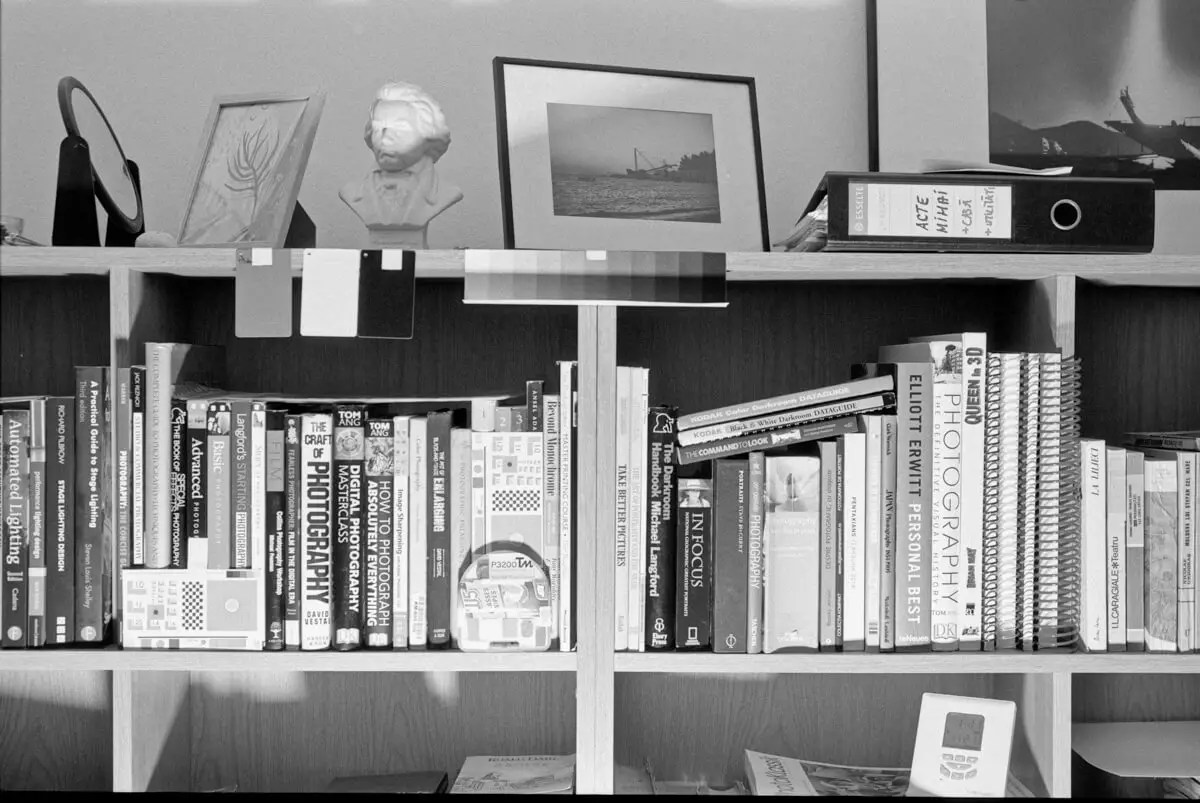
Kentmere 100 vs UN54 (1200px /100% crop)


Kentmere 400 vs N74 plus (entire frame)


Kentmere 400 vs N74 plus (1200px /100% crop)

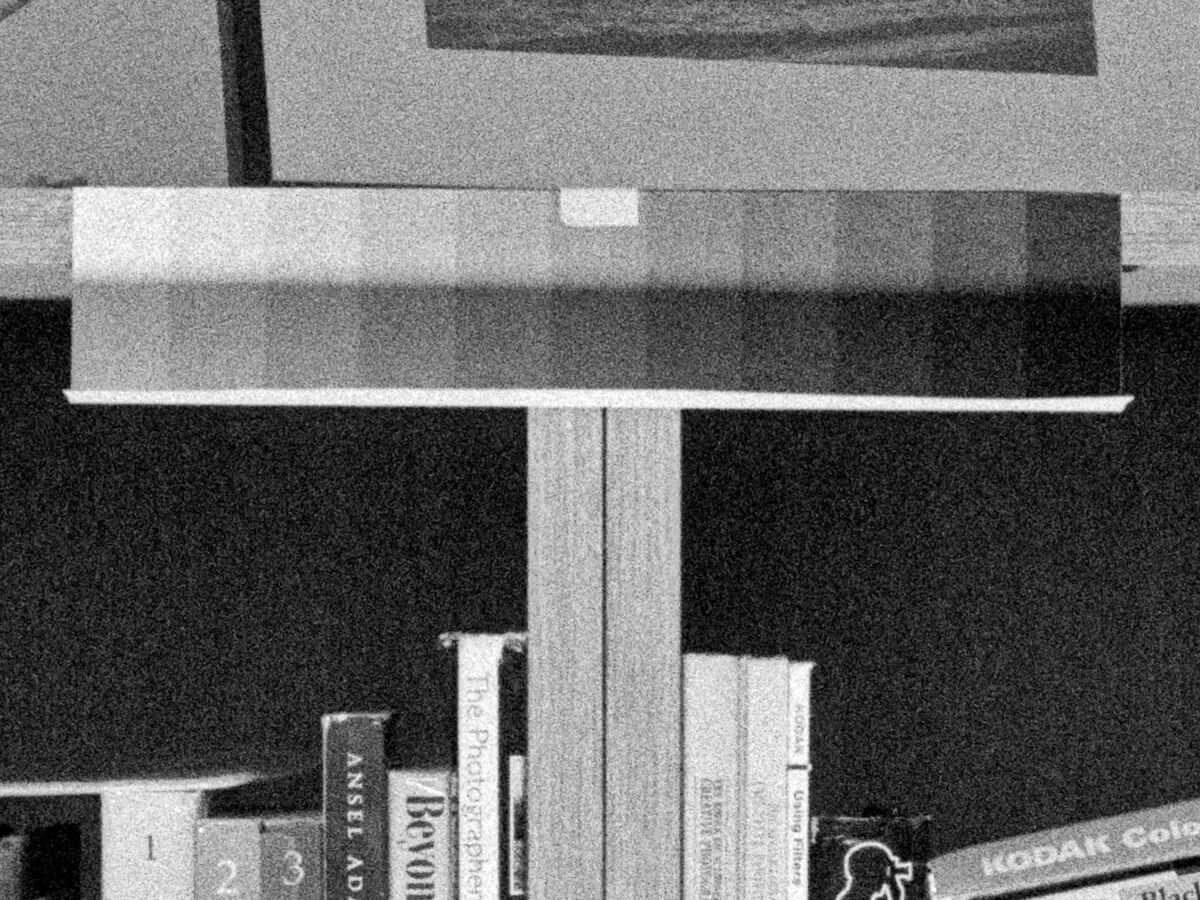
Slightly unrelated, totally not a direct film comparison by any means and completely for my own amusement and record keeping, I also tested some Fomapan 200 Creative @ EI 160 and Adox CMS20 @ EI 25. Both were developed for 10mins in otherwise identical conditions.
As with the Kentmere 400/ORWO N74 plus above, below you will find 1200px scans of the entire frame (resized from the original appx. 6,000x4000px TIFFs) and 100% crops at 1200px wide:
Adox CMS20 vs Fomapan 200 Creative (entire frame)
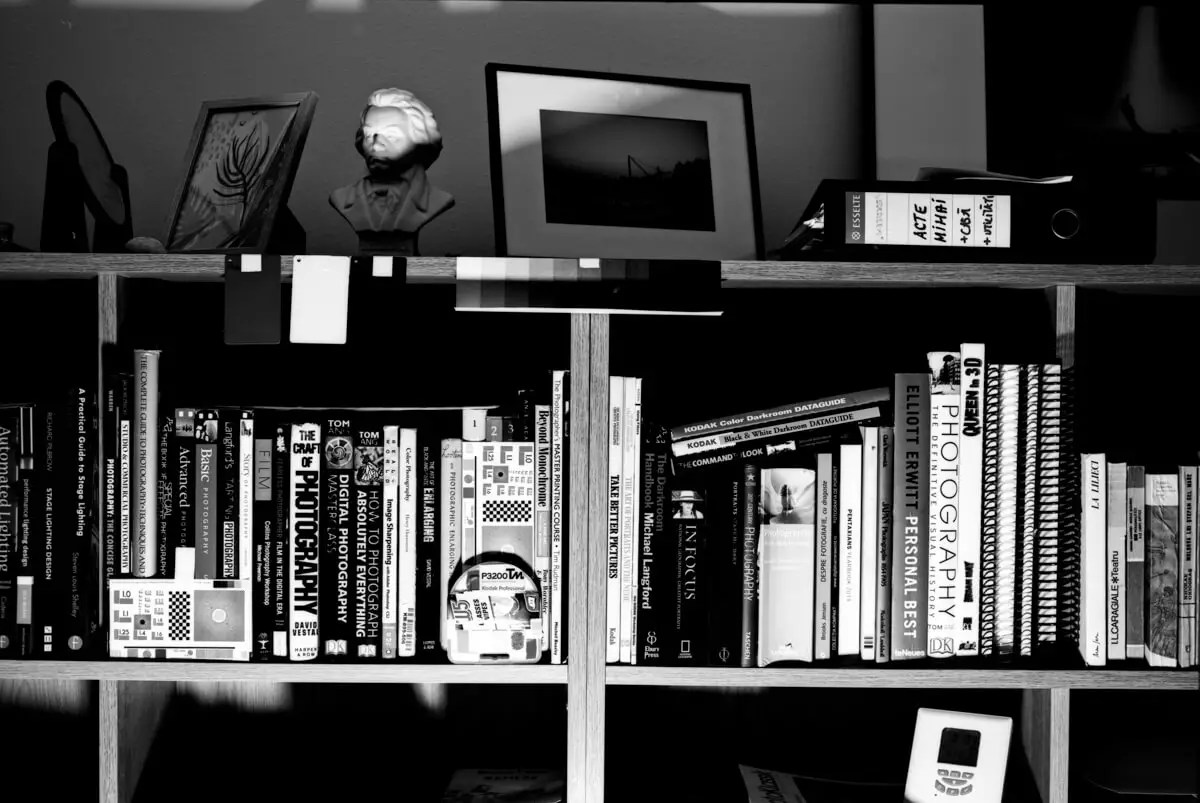
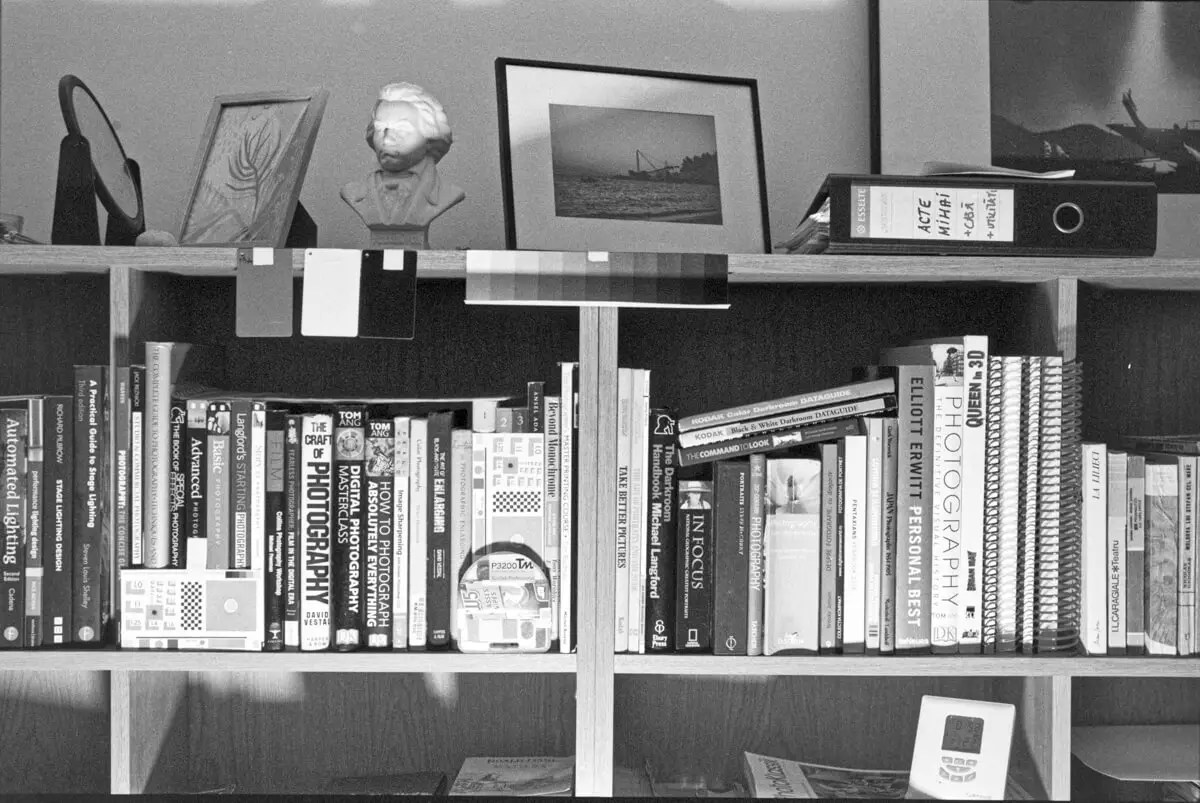
Fomapan 200 Creative vs Adox CMS20 (1200px /100% crop)


Despite the fogging, apparently this article’s main comparisons — Kentmere vs equivalent ORWO films — worked to a certain extent.
The similarity is less clear for the ISO 400 film because of the bad fog (worse grain and shadow detail in the N74 plus), but “color” rendering (the way various colors are translated into BW tones) look really similar. There seems to be a small difference in UN54 vs Kentmere 100 blue vs. red rendering, and absolutely no difference for the ISO 400 films.
My gut feeling is that the EI 100 films look “decently identical” (in “color” rendering, grain, shadow/highlight retention, and so on). And they all have the “film look” I was going for (or it’s just confirmation bias, who actually knows).
So, the bottom line is: I feel that, indeed, Kentmere/ORWO films are either identical or “close enough for rock’n’roll”. And as Agfaphoto’s Kentmere half-brother APX 100/400 can be found for something like 20-25% cheaper than Filmotec’s (apparent) equivalent… I know what I’m gonna get as the next “cheap European film” purchase 🙂
~ Toma
P.S. Here’s a links to the original files shown here along with the two kinds of inversion JPG exports. Download 1.44GB zip file.
Share your knowledge, story or project
The transfer of knowledge across the film photography community is the heart of EMULSIVE. You can add your support by contributing your thoughts, work, experiences and ideas to inspire the hundreds of thousands of people who read these pages each month. Check out the submission guide here.
If you like what you’re reading you can also help this passion project by heading over to the EMULSIVE Patreon page and contributing as little as a dollar a month. There’s also print and apparel over at Society 6, currently showcasing over two dozen t-shirt designs and over a dozen unique photographs available for purchase.

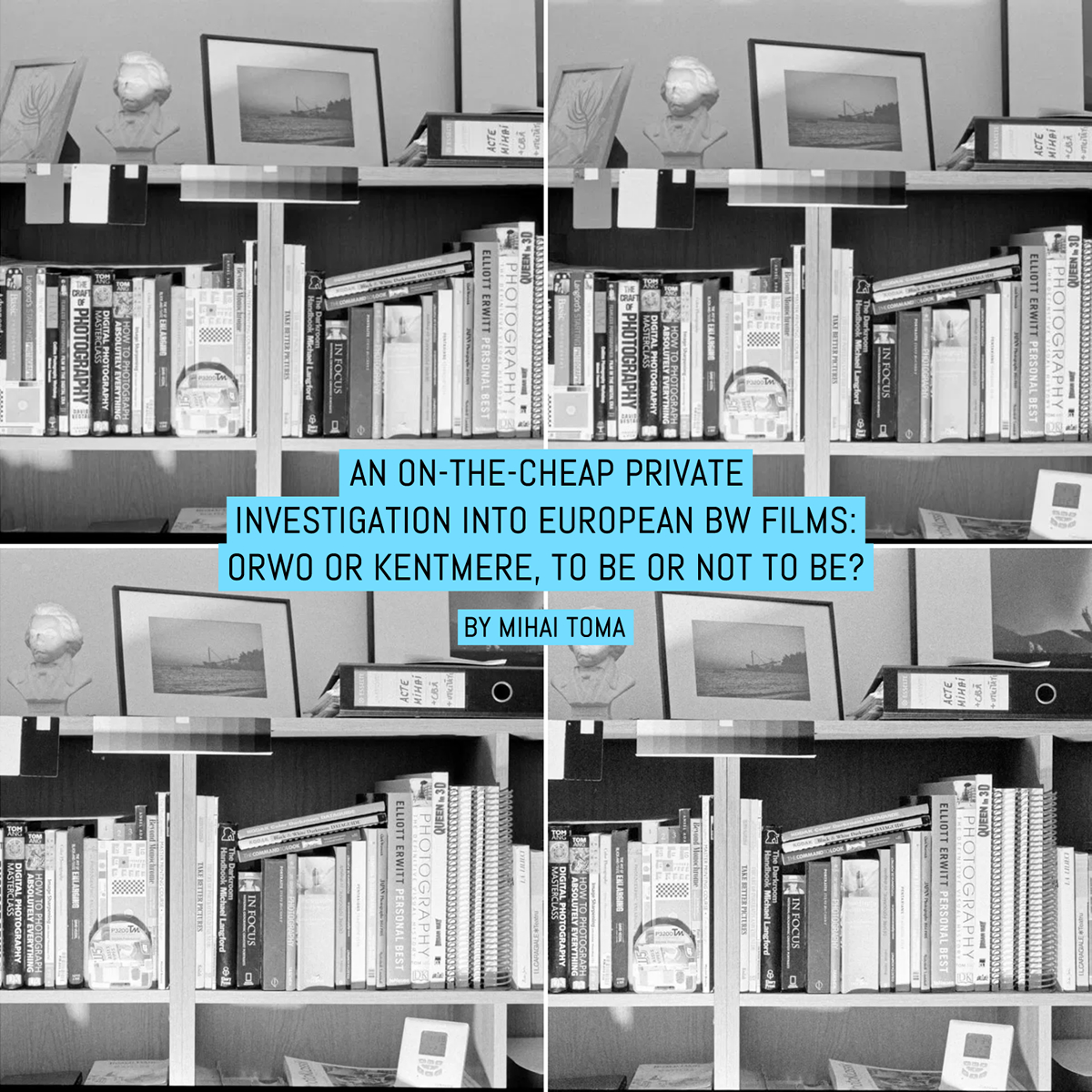






8 responses to “An on-the-cheap private investigation into European BW films: ORWO or Kentmere, to be or not to be?”
@Ken R and Castelli Daniel
Indeed, Vestal’s “Craft” and “Art of BW Enlarging” were the cornerstones of my film shooting and darkroom printing. Lovely books, nicely laid out, chock full of info. On the technical side – hopefully my artsy side can coexist alongside it. 🙂
Thanks a lot – the Solux is the best possible option, IMHO (for slides/color neg/BW) – and I’ve tried close to it all ;). You just need quite a bit of distance from bulb to diffusion (I’ve got something like 40cm) to get the light close to perfectly even on 6x9cm. If you only have 135, the distance can be quite a bit lower.
If you need some tips, go in to the “Digital Film Scan Tools” Facebook group, we can chat there some more.
Toma
Many thanks for this article … and especially for the tip on SoLux bubs. I’m about to embark on scanning about 20K b&w negatives and b&w transparencies, plus maybe 5K color slides, shot over the past seven decades. Will be using a Pentax K-1 full frame DSLR with a SMC Pentax-A 50mm f2.8 macro lens on a rig that looks a lot like yours. Finding a balanced, even light source has been a problem, but you’ve identified one.
To summarize: When “tested” under loosely controlled conditions using a completely arbitrary procedure, b&w films of similar ISO rating look sort of vaguely similar. Aha! Absolute positive proof that all European b&w films are exactly the same product made in the same plant!… or not…
JL, you’ll note that Mihai does not state “absolute positive proof”, in fact, he doesn’t even get close! Mihai’s exact words were “good enough for rock’n’roll”.
I don’t think it’s fair to state he utilised a “completely arbitrary procedure”. Reading the article, you will note that he set out a specific process, which was followed for all films, from exposure through to digitisation.
It’s not a “scientific test” in the strictest sense – lab coats and goggles – however, it was both controlled and repeatable. A scientific test by definition starts on the basis of “an empirical procedure that arbitrates competing models or hypotheses”. He may not have a sensitomer, densitometer and maybe a microscope on hand, however he did what he did in as-controlled a manner as he could and shared both his process and results with all to be replicated as others see fit.
Might I suggest we take this a step further? I’d very much like to publish a film test – of these or other films – that you perform and document. I’d love to be able to understand the research, process and standards you consider to be the basis of effective assessment and share that with the community at large.
Looking forward to hearing from you!
I wrote a fairly complete overview of Orwo N74+ in rodinal and xtol, and at different speeds. I’m fairly certain that it’s a different emulsion than kentmere. My general observation is that most everything looks the same in Rodinal. You can read it or look into it over @ frozenwaste.land/35mm/n74plus.
– Andrew
It’s kinda nice to read an article on testing, much like we did in the 1970’s. It was tedious, but you really understood how film worked and how a specific chemistry would impact the look of the negs. I still use those results.
BTW, Ken R is dead on about Vestal’s book. If you follow his meticulous testing regimen, (corrected for current B&W material) you’ll end up a highly technical photographer, intimately understanding your tools & materials.
Thanks for this. Great tests and interesting conclusions. BTW you have my favorite photography book of all time on your bookshelf – David Vestal’s “The Craft of Photography”. Before I took some classes, this is what taught me photography.